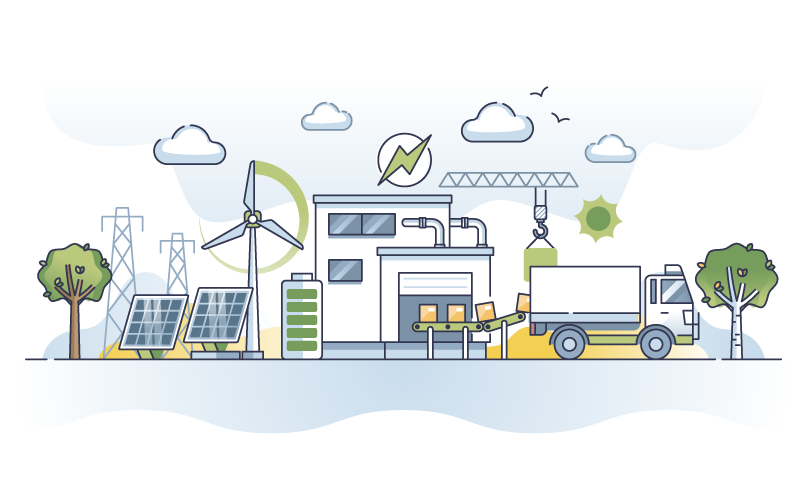Dayforce strengthens supply chain sustainability with new Responsible Sourcing Initiative
Dayforce aims to improve vendor performance on labor, human rights, diversity, and the environment with enhanced supply chain strategy.
.png)
Table of Contents
At Dayforce, we believe in acting responsibly, operating sustainably, and contributing to the greater good. Two years ago, we developed a new strategy to help turn that ambition into reality and make meaningful progress on behalf of our employees, our society, and our planet. In the time since, our organization has worked tirelessly to make our business more inclusive, more efficient, and ultimately more impactful. A few examples include a new DEI program to boost internal mobility for underrepresented minorities within our workforce, a robust decarbonization strategy to help combat climate change, and new tools to better empower our global workforce to give and volunteer in their own communities.
Alongside these initiatives, we developed and embedded new policies and processes across the enterprise to help ensure we moved the needle in pursuit of our ambitions as a fast-growing and responsible business. Although we recognize that we still have a long way to go, we’re proud of the progress we’ve made in such a short period of time.
Creating change at scale
Late last year, the team began to look beyond our proverbial four walls to identify new ways to meaningfully drive progress on key sustainability issues. The biggest opportunity we saw was in an area that I oversee: Dayforce’s supply chain. As our company’s Head of Procurement, I help guide our organization in sourcing the hundreds of millions of dollars of goods and services we need each year to be successful. This includes not only what we buy, but from whom we buy them.
We realized that, as customers, we had the unique ability to engage our vendors and improve their own performance as sustainable businesses. As we dug in further, we realized that just two dozen companies among our top vendors collectively employ around 4.5 million people globally and take in approximately 1.5 trillion dollars in annual revenue.1 Our analysis made crystal clear what we already suspected: the opportunity to create change at scale was vast.
Prioritizing supply chain sustainability
We believe that sustainable supply chains are more resilient and efficient – that building them is not only the right thing to do, but the smart thing to do. As a company, we want to align ourselves with other businesses that make human rights, worker wellness, diversity and inclusion, and environmental stewardship organizational priorities. To do this, we developed our new Responsible Sourcing Initiative, or RSI. Through RSI, our goal is to work with current vendors and select new ones that prioritize the following four principles:
- Safeguarding labor and human rights in their operations and supply chain
- Reducing greenhouse gas (GHG) emissions and improving their environmental impacts
- Improving workforce gender diversity globally and race and ethnic diversity in the U.S.
- Working with organizations that are owned and operated by diverse leaders from underserved and underrepresented groups
Over the past few months, we have taken a number of steps to help integrate the program into every stage of the procurement life cycle. This includes:
- Annually collecting key data from current and new vendors to evaluate their performance and where they collectively and individually need to improve.
- Developing a new Environmental Sustainability Policy that will guide how our colleagues in IT, cloud infrastructure, facilities, and other departments select vendors that meet specific criteria.
- Strengthening our Vendor Code of Conduct that sets out new expectations and requirements for our vendors to follow.
- Adding vendor performance on RSI priorities into the RFP (request for proposal) process to guide how we choose new vendors and adding new language to vendor contracts highlighting new expectations.
- Training our vendor managers to evaluate RSI data so they can incorporate sustainability performance into their evaluation processes.
Evolution, not revolution
As we enter the final phase of the program’s implementation, we’re combing through the data to understand where our supply chain is strong and where it needs to improve. Our aim is to establish a current baseline for performance and to then set new quantitative, timebound targets to increase our overall spend – both as a percentage and total dollars spent – with suppliers that perform well on select criteria within each of our four priority areas. Importantly, one of those areas is environmental stewardship, and we believe this program will help us achieve our Scope 3 GHG emissions goal by encouraging our supply chain partners to work actively to reduce their carbon footprint.
As we continue working toward our wider sustainability goals, please know that our commitment to doing business as responsibly as we can is a top priority. We’re always looking to innovate, and we welcome any ideas or feedback you may have.
[1] This data came from an internal analysis of 24 companies among our top vendors using publicly available employee headcount and revenue numbers.
Forward-Looking Statement
This blog contains forward-looking statements that involve a number of risks and uncertainties. Statements that are not historical facts, and our expectations, hopes, intentions or strategies regarding the future are forward-looking statements. Forward-looking statements are based on management's beliefs, as well as assumptions made by, and information currently available to, management. Because such statements are based on expectations as to the future and are not statements of fact, actual results may differ materially from those projected. We undertake no obligation to update any forward-looking statements, whether as a result of new information, future events or otherwise.
This blog should be read in conjunction with the risks detailed in the “Cautionary Note Regarding Forward-Looking Information,” “Forward-Looking Statement,” “Risk Factors” and other sections of Dayforce’s Quarterly Reports on Form 10-Q, Annual Reports on Form 10-K and other filings with the Securities and Exchange Commission.
You may also like:
Ready to get started?

